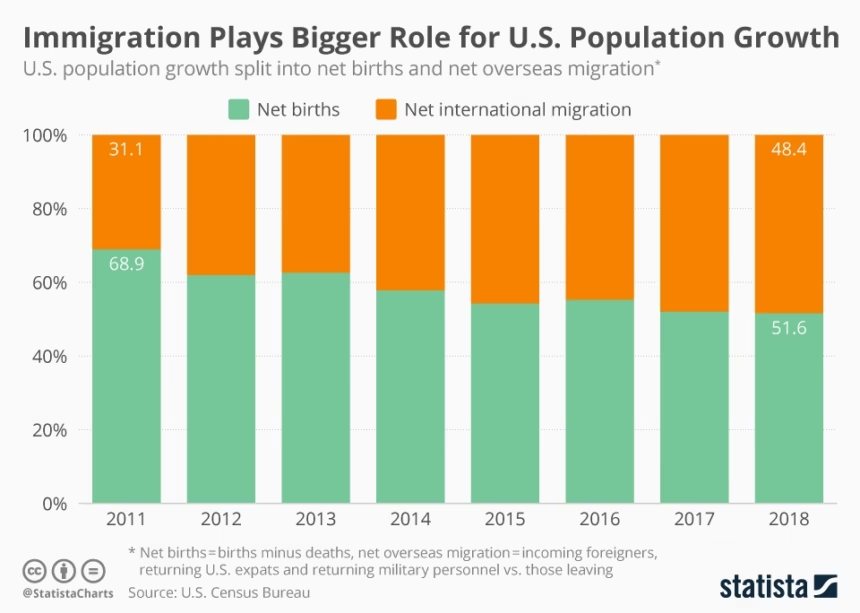The United States experienced its highest population growth rate in 23 years, reaching over 340 million in 2024, according to the U.S. Census Bureau.
This growth of nearly 1% marks a significant recovery from the historic low of 0.2% recorded in 2021, when pandemic-related restrictions significantly curtailed travel and immigration.
The increase in the US population this year was largely driven by immigration, which added 2.8 million people.
This increase was partly attributed to a revised method of counting migrants, including those admitted under humanitarian provisions.
Net international migration accounted for 84% of the total growth of 3.3 million people between 2023 and 2024.
Humanitarian parole programs, a mechanism used for over seven decades by successive US administrations, have played a key role in this increase.
These programs offer temporary entry to people facing urgent circumstances or from countries whose relations with the United States are strained.
According to the Migration Policy Institute, more than 5.8 million people were admitted under various humanitarian policies between 2021 and 2024.
Natural population growth also contributed to the increase, but to a lesser extent. Between 2023 and 2024, the number of births exceeded deaths by 519,000, a clear improvement on the record level of 146,000 recorded in 2021. However, this figure remains well below the strong growth seen in recent decades.
This year’s population estimates have undergone a significant methodological update, incorporating into the count people admitted on parole for humanitarian reasons.
Other immigrant groups have also played a role in the significant increase in the US population.
According to data from the U.S. Bureau of Labor Statistics, more than 1.7 million (1,700,000) Haitians were living in the U.S. in 2021, before the introduction of the parole program, known as the Biden program. This program added more than 210,000 Haitians to the U.S. population, not counting other Haitian nationals who used other means to immigrate to the United States.
Although unrelated to the political changes, this adjustment comes at a pivotal moment.
President-elect Donald Trump, who is preparing to return to the White House, has pledged to implement strict immigration policies, including mass deportations.
Immigration remains one of the most difficult aspects of annual population estimates. It is also a highly political issue. Republicans generally try to keep immigrants out of population statistics, fearing a shift in the electoral map in favor of the Democrats.
Annual population estimates are an essential tool for policymakers, providing data for resource allocation and the distribution of funding between states, counties and metropolitan areas.
These figures bridge the gap between decennial censuses, ensuring accurate representation and equitable distribution of federal resources, which amount to trillions of dollars annually.
The 2024 growth rate underscores the essential role played by immigration in the evolution of American demographics. While birth rates remain low and natural population growth lags historical trends, immigration continues to support the nation’s overall growth trajectory.







